 W
WAn aquiline nose is a human nose with a prominent bridge, giving it the appearance of being curved or slightly bent. The word aquiline comes from the Latin word aquilinus ("eagle-like"), an allusion to the curved beak of an eagle. While some have ascribed the aquiline nose to specific ethnic, racial, or geographic groups, and in some cases associated it with other supposed non-physical characteristics, no scientific studies or evidence support any such linkage.
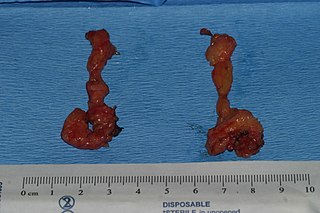 W
WThe buccal fat pad, is one of several encapsulated fat masses in the cheek. It is a deep fat pad located on either side of the face between the buccinator muscle and several more superficial muscles. The inferior portion of the buccal fat pad is contained within the buccal space. It should not be confused with the malar fat pad, which is directly below the skin of the cheek. It should also not be confused with jowl fat pads. It is implicated in the formation of hollow cheeks and the nasolabial fold, but not in the formation of jowls.
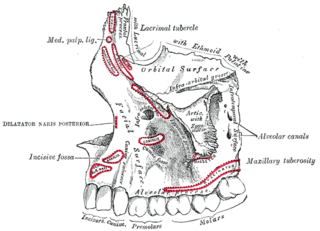 W
WIn the musculoskeletal anatomy of the human head, lateral to the incisive fossa of the maxilla is a depression called the canine fossa. It is larger and deeper than the comparable incisive fossa, and is separated from it by a vertical ridge, the canine eminence, corresponding to the socket of the canine tooth;
 W
WThe cheeks constitute the area of the face below the eyes and between the nose and the left or right ear. "Buccal" means relating to the cheek. In humans, the region is innervated by the buccal nerve. The area between the inside of the cheek and the teeth and gums is called the vestibule or buccal pouch or buccal cavity and forms part of the mouth. In other animals the cheeks may also be referred to as jowls.
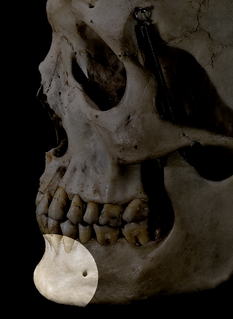 W
WThe human chin is the forward pointed part of the anterior mandible below the lower lip. A fully developed human skull has a chin of between 0.7 cm and 1.1 cm.
 W
WCleft lip and cleft palate, also known as orofacial cleft, is a group of conditions that includes cleft lip, cleft palate, and both together. A cleft lip contains an opening in the upper lip that may extend into the nose. The opening may be on one side, both sides, or in the middle. A cleft palate occurs when the roof of the mouth contains an opening into the nose. These disorders can result in feeding problems, speech problems, hearing problems, and frequent ear infections. Less than half the time the condition is associated with other disorders.
 W
WCoarse facial features or coarse facies describes a constellation of facial features that are present in many inborn errors of metabolism.
 W
WThe Cupid's bow is a facial feature where the double curve of a human upper lip is said to resemble the bow of Cupid, the Roman god of erotic love. The peaks of the bow coincide with the philtral columns giving a prominent bow appearance to the lip.
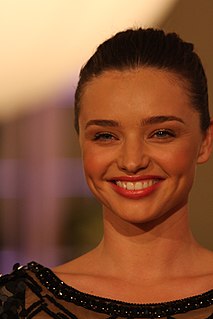 W
WA dimple is a small natural indentation in the flesh on a part of the human body, most notably in the cheek. Numerous cultures believe that cheek dimples are a good luck charm that entices people who think they are physically attractive, but they are also associated with heroism and innocence, which has been included in literature for many centuries.
 W
WDiprosopus, also known as craniofacial duplication, is an extremely rare congenital disorder whereby parts (accessories) or all of the face are duplicated on the head.
 W
WAn epicanthic fold or epicanthus is a skin fold of the upper eyelid that covers the inner corner of the eye. However, variation occurs in the nature of this feature and the possession of 'partial epicanthic folds' or 'slight epicanthic folds' is noted in the relevant literature. Various factors influence whether epicanthic folds form, including ancestry, age, and certain medical conditions.
 W
WEye color is a polygenic phenotypic character determined by two distinct factors: the pigmentation of the eye's iris and the frequency-dependence of the scattering of light by the turbid medium in the stroma of the iris.
 W
WAn eyebrow is an area of short hairs above each eye that follows the shape of the lower margin of the brow ridges of some mammals. In humans, eyebrows serve two main functions: first, communication through facial expression, and second, prevention of sweat, water, and other debris from falling down into the eye socket. It is common for people to modify their eyebrows by means of hair removal and makeup.
 W
WAn eyelash is one of the hairs that grows at the edge of the eyelid. It grows in one layer on the edge of the eyelids. Eyelashes protect the eye from debris, dust and small particles and perform some of the same functions as whiskers do on a cat or a mouse in the sense that they are sensitive to being touched, thus providing a warning that an object is near the eye.
 W
WFacial hair is hair grown on the face, usually on the chin, cheeks, and upper lip region. It is typically a secondary sex characteristic of human males. Men typically start developing facial hair in the later stages of puberty or adolescence, around fifteen years of age, and most do not finish developing a full adult beard until around eighteen or later. Large variations can occur however, as boys as young as eleven have been known to develop facial hair, and some men cannot grow much facial hair at all.
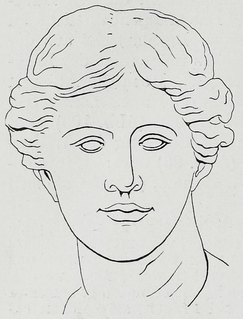 W
WFacial symmetry is one specific measure of bodily symmetry. Along with traits such as averageness and youthfulness it influences judgments of aesthetic traits of physical attractiveness and beauty. For instance, in mate selection, people have been shown to have a preference for symmetry.
 W
WIn human anatomy, the forehead is an area of the head bounded by three features, two of the skull and one of the scalp. The top of the forehead is marked by the hairline, the edge of the area where hair on the scalp grows. The bottom of the forehead is marked by the supraorbital ridge, the bone feature of the skull above the eyes. The two sides of the forehead are marked by the temporal ridge, a bone feature that links the supraorbital ridge to the coronal suture line and beyond. However, the eyebrows do not form part of the forehead.
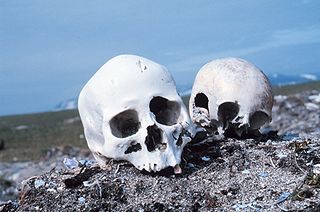 W
WForensic facial reconstruction is the process of recreating the face of an individual from their skeletal remains through an amalgamation of artistry, anthropology, osteology, and anatomy. It is easily the most subjective—as well as one of the most controversial—techniques in the field of forensic anthropology. Despite this controversy, facial reconstruction has proved successful frequently enough that research and methodological developments continue to be advanced.
 W
WThe human eye is a sense organ that reacts to light and allows vision. Rod and cone cells in the retina are photoreceptive cells which are able to detect visible light and convey this information to the brain. Eyes signal information which is used by the brain to elicit the perception of color, shape, depth, movement, and other features. The eye is part of the sensory nervous system.
 W
WIn human anatomy, the mouth is the first portion of the alimentary canal that receives food and produces saliva. The oral mucosa is the mucous membrane epithelium lining the inside of the mouth.
 W
WThe human nose is the most protruding part of the face. It bears the nostrils and is the first organ of the respiratory system. It is also the principal organ in the olfactory system. The shape of the nose is determined by the nasal bones and the nasal cartilages, including the nasal septum which separates the nostrils and divides the nasal cavity into two. On average the nose of a male is larger than that of a female.
 W
WThe jaw is any opposable articulated structure at the entrance of the mouth, typically used for grasping and manipulating food. The term jaws is also broadly applied to the whole of the structures constituting the vault of the mouth and serving to open and close it and is part of the body plan of humans and most animals.
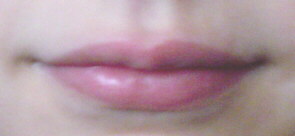 W
WLips are a visible body part at the mouth of many animals, including humans.
 W
WIn animal anatomy, the mouth, also known as the oral cavity, buccal cavity, or in Latin cavum oris, is the opening through which many animals take in food and issue vocal sounds. It is also the cavity lying at the upper end of the alimentary canal, bounded on the outside by the lips and inside by the pharynx and containing in higher vertebrates the tongue and teeth. This cavity is also known as the buccal cavity, from the Latin bucca ("cheek").
 W
WThe nasal bones are two small oblong bones, varying in size and form in different individuals; they are placed side by side at the middle and upper part of the face and by their junction, form the bridge of the upper one third of the nose.
 W
WThe nasion is the most anterior point of the frontonasal suture that joins the nasal part of the frontal bone and the nasal bones. It marks the midpoint at the intersection of the frontonasal suture with the internasal suture joining the nasal bones. It is visible on the face as a distinctly depressed area directly between the eyes, just superior to the bridge of the nose. It is a cephalometric landmark that is just below the glabella.
 W
WThe nasolabial folds, commonly known as "smile lines" or "laugh lines", are facial features. They are the two skin folds that run from each side of the nose to the corners of the mouth. They are defined by facial structures that support the buccal fat pad. They separate the cheeks from the upper lip. The term derives from Latin nasus for "nose" and labium for "lip". Nasolabial fold is a misnomer, however. The proper anatomical term is melolabial fold, meaning the fold between the cheek and lip.
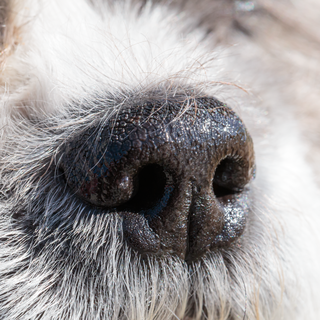 W
WA nose is a protuberance in vertebrates that houses the nostrils, or nares, which receive and expel air for respiration alongside the mouth. Behind the nose are the olfactory mucosa and the sinuses. Behind the nasal cavity, air next passes through the pharynx, shared with the digestive system, and then into the rest of the respiratory system. In humans, the nose is located centrally on the face and serves as an alternative respiratory passage especially during suckling for infants.
 W
WA nostril is either of the two orifices of the nose. They enable the entry and exit of air and other gasses through the nasal cavities. In birds and mammals, they contain branched bones or cartilages called turbinates, whose function is to warm air on inhalation and remove moisture on exhalation. Fish do not breathe through noses, but they do have two small holes used for smelling, which can also be referred to as nostrils.
 W
WPrognathism is a positional relationship of the mandible or maxilla to the skeletal base where either of the jaws protrudes beyond a predetermined imaginary line in the coronal plane of the skull. In general dentistry, oral and maxillofacial surgery, and orthodontics, this is assessed clinically or radiographically (cephalometrics). The word prognathism derives from Greek πρό and γνάθος. One or more types of prognathism can result in the common condition of malocclusion, in which an individual's top teeth and lower teeth do not align properly.
 W
WThe facial skeleton comprises the facial bones that may attach to build a portion of the skull. The remainder of the skull is the braincase.
 W
WThe brow ridge, or supraorbital ridge known as superciliary arch in medicine, refers to a bony ridge located above the eye sockets of all primates. In Homo sapiens sapiens the eyebrows are located on their lower margin.
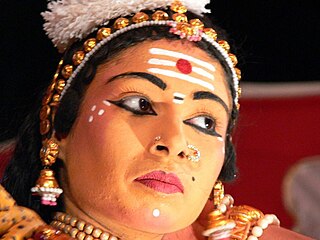 W
WTripundra is a Śaivite tilaka, and a form of body art with origins in South India. It consists of three horizontal lines on the forehead, usually with a dot made from sacred ash, and has spiritual meaning in Shiva tradition within Hinduism. A Vishnu tradition related mark consisting of vertical lines is called Urdhva Pundra.
 W
WWhite roll is the white line that borders the top of the upper lip. It's an adnexal mass of specialized glands and fat. White roll occurs naturally for nearly everyone, although it can be not white and less visible for dark skinned individuals. Well defined white roll indicates youthfulness and is considered aesthetically pleasing.
 W
WA widow's peak is a V-shaped point in the hairline in the center of the forehead. Hair growth on the forehead is suppressed in a bilateral pair of periorbital fields. Without a widow's peak, these fields join in the middle of the forehead so as to give a hairline that runs straight across. A widow's peak results when the point of intersection on the forehead of the upper perimeters of these fields is lower than usual.
 W
WIn the human skull, the zygomatic bone is a paired irregular bone which articulates with the maxilla, the temporal bone, the sphenoid bone and the frontal bone. It is situated at the upper and lateral part of the face and forms the prominence of the cheek, part of the lateral wall and floor of the orbit, and parts of the temporal fossa and the infratemporal fossa. It presents a malar and a temporal surface; four processes, and four borders.